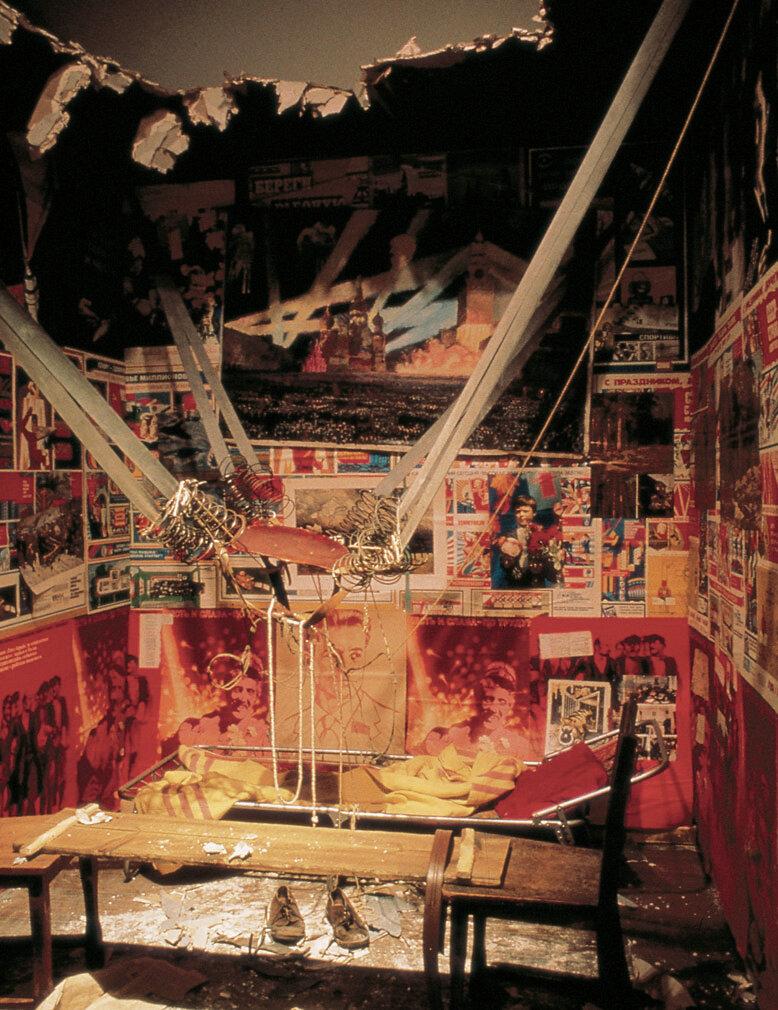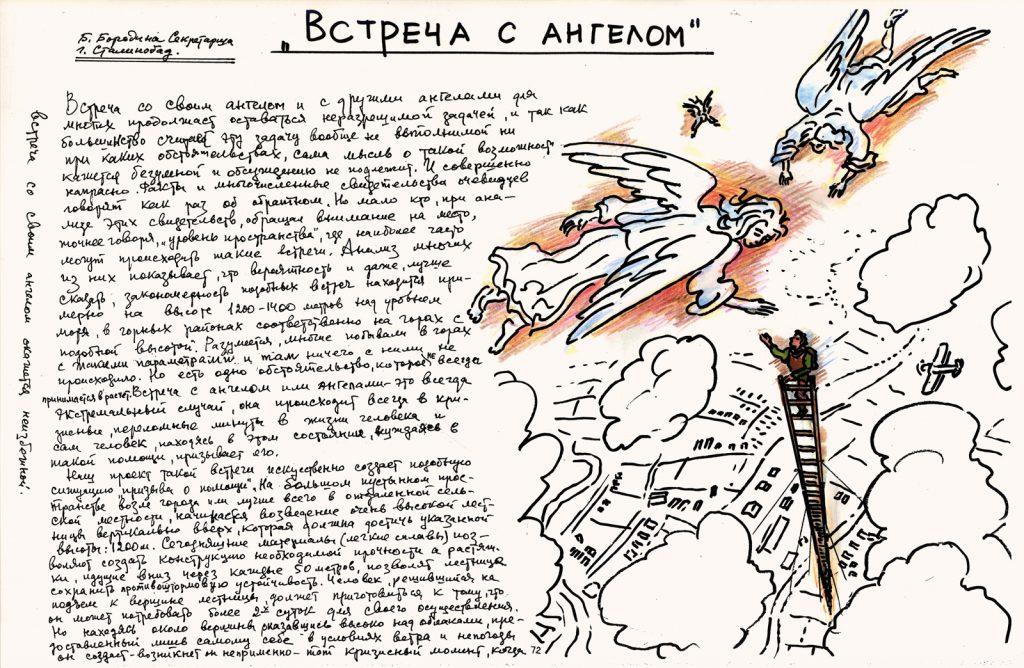Emilia Kabakov Talk New Museum, NYC Residency
December 12, 2022
by Nandita Baxi Sheth, PhD Candidate

This essay reviews a talk between artist Emilia Kabakov and IDSVA Director Dr. Simonetta Moro. The talk was part of the 2022 IDSVA New York Residency bringing together faculty, staff, and students in person after two years of pandemic travel pauses. Moro asked Kabakov questions as they sat on stage in a lecture hall in the auditorium of the New Museum in New York City. Emilia and her husband, the artist Ilya Kabakov, collaborate on a variety of projects, including installations and public sculptures. Images of the Kabakovs’ work were projected at the back of the stage. Emilia explained that while she and Ilya work as a team, he was not present for the talk due to his age. At the age of 88, he focuses his energy on making art in their studio in Long Island, NY. The Kabakovs were both born in Dnepropetrovsk, formerly part of the Soviet Union, which is now in Ukraine. Significantly, at the time of the talk Russia had (and continues) to wage war with Ukraine.
The Kabakovs are known as Russian artists and also critical of the Russian state. When asked about her nationality Emilia answered, “I don’t know who we are…where we belong.” Ideas about nationalism, tolerance, and belonging are recurrent themes in the Kabakovs’ work. Works discussed include drawings, paintings, installations, and public sculptures. One of the first images shows an apartment exhibit curated while Ilya lived in the USSR prior to his immigration to the United States. These exhibits created by Ilya and his fellow art friends were made secretly. At the time, in Russia, art production was required to serve the values and mission of the communist state. This predicament recalls theoretical debates and tensions around the social political role of the artist to serve the state and the freedom of artistic expression expressed by Lenin, Rivera, Siqueiros, and Benjamin in the book Art in Theory: 1900-2000, edited by Harrison and Wood. While Ilya’s “day” job was to illustrate children’s books, he created more satirical, political, and critical work in secret. Emilia described how the constant sense of surveillance and fear he felt while living in Russia influenced the later themes of their art focused on fantasy and escape.
Images of escape through flight and angels permeate the couple’s work. Emilia explained that Ilya was influenced by Russian literature, which depicted the life of the everyday man in works by Chekov, Dostoevsky, and Gogol. These “little men” stand in contrast to the larger than life “hero” of the Western imaginary. The couple draws on imagery from what Emilia described as an “enormous river of culture.” We see a variety of references in Ilya’s paintings about paintings which merge and mesh diverse art periods such as Baroque and Old Masters. The viewer is left to make their own connections; as Emilia insisted, they do not “explain the art.”
The couple has collaborated on a range of artworks and is well known for creating immersive installations. The Tate Modern describes their work as follows:
The Kabakovs are amongst the most celebrated artists of their generation, widely known for their large-scale installations and use of fictional personas. Critiquing the conventions of art history and drawing upon the visual culture of the former Soviet Union – from dreary communal apartments to propaganda art and its highly optimistic depictions of Soviet life – their work addresses universal ideas of utopia and fantasy; hope and fear.
Emilia explained that every detail of the installation is thought-out, from the music to the observation benches. She also said that an installation is meant to feel like standing inside a painting. The installations are developed through careful planning with drawings, etchings, and models, which serve to document the process and are artifacts of the installations once they are dismantled. We saw an image of one of their most significant installations, “The Man Who Flew Into Space from His Apartment”. This installation creates a glimpsed experience of an imaginary escape (Figure 1).

Another significant series of work discussed in the talk was public sculptures that work with the theme of angels. Emilia spoke about several public installations of the series “How to Meet an Angel”. Figure 2 shows a conceptual drawing of the sculpture with detailed notes. The sculpture consists of a ladder extending into the sky. At the end of the ladder a male figure with a backpack holds his hands up to the sky. The angels are suggested and thus deliberately open to each individual’s interpretation. The act of waiting is dramatized, and the feeling of anticipation explored.

While we barely covered the breadth of the Kabakovs’ work, we did receive an intimate introduction to their themes and practices through Emilia’s conversation with Dr. Moro. The Kabakovs’ work is complex, using the fantastical to imagine responses to everyday political and social issues.
